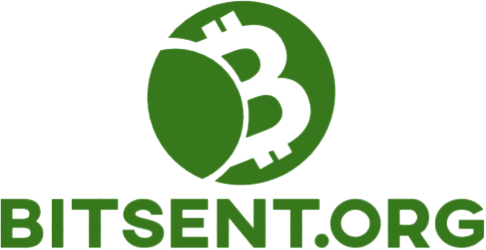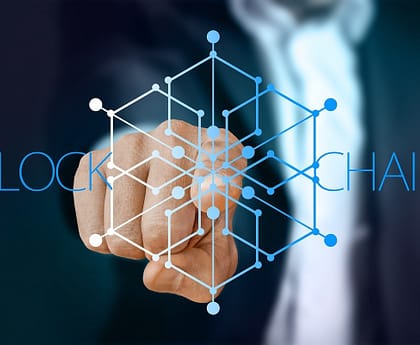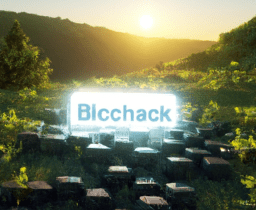A blockchain is a continuously growing list of records, called blocks, which are linked and secured using cryptography. Each block typically contains a cryptographic hash of the previous block, a timestamp, and transaction data. By design, a blockchain is inherently resistant to modification of the data.
It is an open, distributed ledger that can record transactions between two parties efficiently and in a verifiable and permanent way. For use as a distributed ledger, a blockchain is typically managed by a peer-to-peer network collectively adhering to a protocol for inter-node communication and validating new blocks.
Blockchain is a technology that enables us to create a permanent, public ledger of transactions that everyone can see. This ledger is not stored in any single location and it’s not controlled by any one entity; instead, it exists on the computers of everyone who uses bitcoin, which means that it’s openly available to everyone.
In fact, every time someone buys or sells Bitcoin, their transaction is recorded on this public ledger. Bitcoin transactions are tracked by what we call miners. Miners are people who run special software to do the work of mining blocks. What they’re doing is trying to find a new block (a block contains data like the time and the transactions).
When they find one, they’ve mined a new block, and they get the reward for doing so—currently 12.5 Bitcoins. Blockchain technology was invented by an unknown person under the name Satoshi Nakamoto in 2009. He released his invention as open-source software, which meant that anyone could use it for free and use it however they want. He created this technology as a way for people to digitally exchange money without having to trust each other or any third party like a bank or government. It was designed so that every person in the world could be able to interact with each other directly and freely.
What is the biggest benefit of blockchain?
That’s because blockchain has so many potential uses, and we don’t really know how people will end up using them. But there are some obvious benefits that might not be as well known. For example, it’s a way to make sure all the data is stored on more than one computer, instead of it all being stored on just one central server.
That helps keep things secure. It also means no single person or company controls all the information, which helps keep everyone more honest than they might be if they knew everything was at their fingertips. There are lots of benefits of blockchain technology.
One of the biggest benefits is that it makes transactions between parties seamless and easy. For example, when you use a credit card to make a purchase, there are fees attached to each transaction. With blockchain, there are no fees for the transaction.
This represents a huge benefit for both buyers and sellers. Another big benefit of blockchain is that it provides transparency in transactions that would be difficult or impossible otherwise. When something is on a blockchain, people can see it. The technology allows for transactions to be scrutinized by all parties if necessary, which can help prevent fraud or mistakes from occurring.
This also means that companies can provide better customer service because they know exactly what they’re doing and they can show customers what’s going.
What is the main purpose of blockchain?
The main purpose of blockchain is to maintain a digital ledger of transactions. This ledger allows anyone on the internet to verify that the transactions have taken place and that they are valid. When a transaction takes place, it gets added to the public digital ledger.
In addition, when a block takes place, the information in the block gets added to the blockchain. From there, it becomes a permanent part of the digital ledger. Blockchain is a distributed ledger on a peer-to-peer network. The purpose of blockchain is to make sure that transactions between individuals and companies are verified, secure, and efficient. It does so by giving everyone a digital wallet, which can be public or private, to hold their money and other digital assets.
Every time someone makes a transaction on the blockchain, that transaction is recorded on a block and added to the chain. This allows the information to be accessible by everyone on the network and helps prevent duplicated transactions. This distributed ledger technology can be used for many types of applications in addition to currency exchange.
For example, it could play an important role as part of a supply chain management system (by recording data about goods being transported), where it could help track items through the various steps between manufacturer and consumer.
Blockchain has become more popular in recent years due to its use in cryptocurrencies like Bitcoin, but companies have been investigating how they can use the technology for many different purposes—such as secure information sharing—since it was first developed in 2008.
Blockchain For Dummies The Basics Of Blockchain Networks
A Simple Plan For THE TRUTH ABOUT BLOCKCHAIN
https://www.youtube.com/watch?v=-6yeo8Zk034 The world economic forum estimates that more than 25 countries have invested in blockchain technology and have applied for more than 2,500 patents with an investment of $ 1.3 billion.
The time is ripe for the financial sector to disrupt the blockchain. In a survey conducted by the IBM Institute for Business Value and the economist intelligence unit, a seventh of the companies known as trailblazers stated that they expect the blockchain to be put into production and commercial scale this year. I
BM further estimates that 65% of banks will have models within three years. Take Bitcoin as an example to illustrate the complexity of regulation. This technology challenges not only the way of the organization but also the government, so it is far from a quick process to find a suitable regulation for both. No third-party intermediary is required to verify or transfer ownership.
If the stock transaction is carried out on a blockchain-based system, it will be settled safely and reliably within a few seconds. (The infamous hackers who influenced Bitcoin transactions revealed that the weakness does not lie in the blockchain itself but in an independent system linked to the parties using the blockchain.)
Blockchain has enormous potential and is expected to unlock a wave of innovation. In other words, it is really full of complications, and even those close to it do not know how it will work. The development of replacement applications requires careful planning as existing solutions can be difficult to solve.
A sustainable method may be to focus on alternative products that do not require end users to change their behavior but provide alternatives that are expensive or unattractive solutions. To be attractive, alternative products must have as good functions as traditional solutions and must be easy for the ecosystem to absorb and adopt.
First data’s relocation of blockchain-based gift cards is a good example of a well-thought-out alternative. Retailers who provide it to consumers can use blockchain to track currency flows in their accounts, greatly reducing the cost of each transaction and improving security without relying on external payment processors. These new gift cards can even transfer balances and transaction functions between merchants via a general ledger.
Blockchain & Biometrics: The Future of Identity
https://www.youtube.com/watch?v=ZPG3XQhZVII In the future, Biometric technology will be widely used for identity management. Biometric authentication has been closely linked to the concept of identity, as certain Biometrics can identify you among a certain set of users (as employees or citizens).
In this case, identity is the way you “assert” rights, membership, and ownership of property or data. Hitachi from Technology Media Telecom demonstrated Biometric blockchain authentication through Ledger Insights 2 years ago. The retailers included include the telecommunications company KDDI’au SHINJUKU’s flagship store and the branch of Mr. Donuts.
The demonstration is just an employee pilot and uses the KDDI coupon system. Biometric users first register and use their fingerprints for identification. It uses Hitachi’s own Biometric infrastructure (PBI). Hitachi does not store biometric data.
Instead, it uses fingerprints to create digital signatures through public-key cryptography. Signature creation is a one-way conversion with fluctuations, so it can not be repeated. Therefore, if the identity is recreated, the variations will be slightly different, creating a different signature.
How it works when a user receives coupons, will be linked to the person’s identity. The user does not have to show the coupon but puts his finger on the dealer’s identity verification gadget. You can use coupons without using a smartphone.
This allows users to use coupons faster and retailers to use them more efficiently. Coupon usage data is stored in the Hyperledger fabric blockchain, which can reduce reconciliation costs. This also makes it very difficult to manipulate coupons. Each participant in the blockchain will host a node and therefore a copy of the shared information. B
Biometric coupon Hitachi Hyperledger fabric recognition KDDI test to ensure the car meets legal requirements Japan’s SBI participated in the digitization of the Blockchain project: Digital “Premium Coupon” project for low-income families But where will the declaration of identity be? Today, the government issues identity statements in the form of documents that are difficult to falsify, including birth certificates, driving licenses, and passports.
About a dozen companies are actively involved in identity solutions, and these agencies are independent of all central authorities, such as authorities or representatives of companies or entities. All of these solutions include identity declarations available in the blockchain to achieve decentralization, enforceable contracts, secure encryption, and consensus.
Individuals and organizations working with arXivLabs have accepted and accepted our values of openness, community, excellence, and user data. arXiv is committed to these values and only collaborates with partners who follow these values.
Essential Blockchain Technology Concepts You Need To Know
Transformation scenarios take off in the end, but they will also provide enormous value. They can have a profound impact in two ways: large public identification systems for functions such as passport control and algorithm-driven decision-making to prevent money laundering and complex financial transactions involving many parties.
We hope that these applications will not be widely accepted and reach critical mass in at least a decade or more. In a blockchain system, the general ledger is replicated in a large number of identical databases, each hosted and maintained by an interested party.
When changes are made to a copy, all other copies are updated at the same time. So when transactions occur, the value and assets that are exchanged are recorded permanently in all general ledgers. There is no need for third-party intermediaries to verify or transfer ownership.
If a stock transaction took place on a blockchain-based system, it would be settled within seconds, securely, and verifiably. (The infamous hackers who have hit Bitcoin exchanges revealed weaknesses not in the blockchain itself but in separate systems linked to parties using the blockchain.)
Smart contracts can be used to represent almost anything – electronic inventory receipts, bonds, invoices, units, currencies, currency units, forward contracts, risk sharing, etc. Users in the network can create, trade, and settle these cryptographically unique assets in real time.
Every smart contract can be written to include almost any type of business logic. The business logic can be applied automatically according to the terms of the agreement. Blockchain – a peer-to-peer network on the Internet – was introduced in October 2008 as part of the Bitcoin proposal for the virtual currency system this avoids a central authority issuing currency, transferring ownership, and confirming transactions.
Bitcoin is the first application of blockchain technology. Vision: IT in India looks for new opportunities after Covid-1911 on June 11, 2020. 15.41 IST Stanford Professor Nicholas Blom’s research shows that work from home can improve performance by 13%, reduce wear, and even affect the company’s recent research has yielded similar results.
A software development company called Metova reported that 50% of its employees said they work more from home than in the office. Getting into the last quadrant are completely new applications that, if successful, can change the nature of economic, social, and political systems.
They are about coordinating the activities of many actors and reaching institutional agreements on standards and procedures. Their adoption will require major social, legal, and political changes.
We have developed a framework for mapping innovations based on these two contextual dimensions and dividing them into quadrants. (See the exhibition “How Basic Technology Works.”) Each quadrant represents a stage of technological development.
Deciding which blockchain innovation belongs helps managers understand the types of challenges, the degree of collaboration and consensus required, and the required legislative and regulatory work. The map will also suggest the types of processes and infrastructure that need to be adopted to facilitate the adoption of innovations.
Managers can use it to evaluate the development of blockchain in all industries, as well as to evaluate their own strategic investments in blockchain functions. The development of replacement applications requires careful planning as existing solutions can be difficult to solve.
A sustainable method can be to focus on alternative products that do not require end-users to change their behavior, but that offer alternatives to expensive or unattractive solutions. In order to attract people, alternative products must have as good functions as traditional solutions and be easy to absorb and adopt for the ecosystem.
First data’s transition to blockchain-based gift cards is a good example of a well-thought-out alternative. Retailers who provide it to consumers can significantly reduce the cost of each transaction and increase security by using blockchain to track currency flows in their accounts without having to rely on external payment processors. These new gift cards can even transfer balances and transaction functions between merchants via a general ledger.
Practical Advice For Blockchain Explorer – The Basics
Like other blockchain discoverers on CoinMarketCap, BNB Explorer lets you see the most relevant blockchain data for Binance coin. It not only provides an overall overview of the entire ecosystem but also provides an opportunity to obtain more detailed information about its various parts.
In addition to blockchain data, you can also see market data for Litecoin, which comes from CoinMarketCap’s main platform. Here you can find the current price and circulation range for LTC, as well as its market value, which is obtained by multiplying the first two measurements.
Daily transactions with Litecoin. The number and current rankings for all cryptocurrencies listed by market value are also shown here.

Blockchain Explorer Archive-Cryptominded
CMC’s block explorer directly retrieves information from the provided blockchain and presents it in a simple way so that you can see how your currency cryptocurrency works quickly. You can check the latest price, market value, circulating products, blockchain transactions, block height, hash frequency, etc.
By clicking on each individual transaction hash, you can open the transaction’s own page, which contains useful information about the transaction. You can check the sending and receiving addresses, if the transaction has been confirmed by the network and how many times it has been confirmed. Just like the Bitcoin block explorer, the most recent Ethereum block and the number of transactions it contains when you enter CMC’s Ether Explorer are displayed.
Blockchain Explorer price, market value
At the top of BNB Explorer, users can see a chart representing the most recent block in the Binance coin network. The chart lists the most important blockchain and market data for BNB: block height, price, market value, daily trading volume, etc. Litecoin is one of the earliest and most popular altcoins-aka, one of the cryptocurrencies launched after Bitcoin.
It was originally designed as a Bitcoin derivative product, and most of its code-based features were taken directly from the original cryptocurrency, and only minor changes were introduced. Litecoin’s launch time is only two and a half minutes (faster than Bitcoins 10), another hash algorithm (with scripts instead of SHA-256), and four times the maximum supply of 84,000,000 coins.
For good reason, Ethereum has always been the second most popular cryptocurrency after Bitcoin. It was designed by the Russian-Canadian programmer Vitalik Buterin and launched in 2015 with the goal of becoming a globally decentralized smart contract ecosystem.
It has become the most popular platform for decentralized autonomous organizations (DAOs) based on smart contracts,
Blockchain Explorer, cryptocurrency tokens, Bitcoin
When you open our BTC blockchain explorer page, you immediately see a visual representation of the newly extracted Bitcoin block in the form of a regularly updated bar chart, where the height of each bar represents the progress of each block and How many transactions have been made. This allows you to easily assess the current level of network activity without having to bring up other menus.
Binance coin (BNB) is an Ethereum-based ERC-20 token launched by Binance in July 2017. Based on the daily trading volume, Binance is one of the largest exchanges in the crypto market. Its original and main purpose is to become Binance’s original symbol, which can be used to pay transaction and withdrawal fees on the stock exchange. Since then, it has been transferred to its own blockchain called Binance Chain.
Bitcoin is the original cryptocurrency and is already the largest and most important currency in the market since the start. With a circulating asset of 21 million, even a small daily price change will bring major changes, which will expand the market value of Bitcoin and reach hundreds of millions of dollars and trigger a chain reaction in the entire cryptocurrency market.
6 Essential Blockchain Technology Concepts You Need To Know Blockchain technology: Latest News & Videos, Photos about The Truth About Blockchain
Blockchain & Biometrics: The Future of Identity Portable Trust: biometric The Truth About Blockchain | ITProPortal Blockchain Explorer | CoinMarketCap




